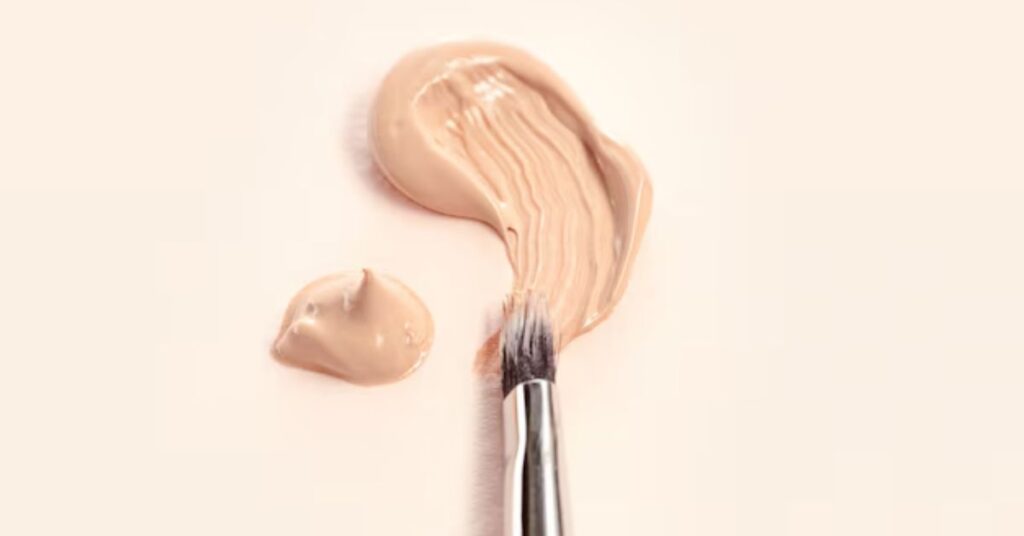Foundation is the first step to that perfect complexion when it comes to makeup. Applying foundation 101 would seem scary for a new face in makeup, but with the right techniques and tools, that’s an impossible feat. The following is an excerpt from this Foundation 101 guide that shares seven things that you should know to get a perfect base every single time.
1. Know your skin type
Understand your skin type before hitting that foundation world. Your skin type is going to play a great role in finding out which formula will work for you.
If you have oily skin, then choose oil-free, mattifying foundations. Mattifying foundations help reduce shine in oily skins. In dry skins, you can opt for hydrating or dewy formula and can add moisture to prevent caking. For normal skin, it is normal usually, but be cautious according to your needs.
2. The right shade Foundation
It is probably the most common mistake made-the wrong shade. A foundation that’s too light or too dark will make your makeup look unnatural. Basically, the goal here is to match your foundation to your skin tone and undertone for seamless blending.
Test foundation 101 shades on your jawline or wrist to find your precise match. Do consider undertones: warm, cool, or neutral. If unsure, select a shade as close as possible to the tone of your neck skin for the best effect.
3. Preparing Your Skin
A moist, clean surface is best for easy, smooth application of foundation 101. Dry skin areas and imperfections will adhere to the foundation or settle into pockets unless the area has been well-prepped.
Solve: Put a light cleaner on the pores to remove grime and excess oil. Finish with a moisturizer that is suitable for your skin type. For people with oily skin, it will be all right to use a more “matting” moisturizer; dry skin should have something “hydrating” applied.
4. Primer
The primer is an essential part of Foundation 101; it not only smoothes out your skin’s texture but also makes your foundation last the whole day. According to your needs, choose a primer for pore reducing, extra hydration, or any special treatment for your skin concerns.
Use only a thin layer of primer after you have moisturized. Target problem areas, for example, areas around the nose or T-zone. Allow this to set for a minute or two before placing foundation 101.
5. Apply foundation using the right application tools
The tools will be the deal-maker when it comes to that perfect finish as far as the application of your foundation 101 is concerned. Some people use brushes to paint their foundation , while others use sponges, and some get their hands dirty by using their fingers. However, one must be wise in tool selection.
To get a more natural-looking finish, stamp on the foundation 101 using a damp makeup sponge. This will give you that airbrushed look. For heavier coverage, one can use a foundation brush. This allows you to build coverage in controlled increments.
6. Blend

If you blend the foundation well, then it should be a very smooth finish. If you do not blend so well, you might end up with harsh lines and streaks, which are rather obvious and would make the foundation look patchy.
Fix: Apply foundation in small sections, using gentle tapping motions to blend into the skin. Focus on areas where foundation tends to settle, like around the jawline and hairline. Blend the foundation into your neck to avoid a noticeable line.
7. Set Your Foundation
Setting your foundation is essential for ensuring it stays in place throughout the day. Without setting your foundation, it may slide off or fade over time.
Apply foundation 101, then dust over it with a light dusting of translucent powder. This will set everything in place, trapping oil that might break your makeup down. If you want a dewy look, use a setting spray instead.
FAQ Section
Q1: Which type of foundation should I choose?
A: If your skin is oily, use oil-free or matte foundation, hydrating or dewy for dry, combination of formula dependent on the look you want, and if you have normal skin, dependent on the desired level of coverage.
Q2: If I do not have the time to prime?
A: In a hurry, it’s fine to skip primer; though this will help even out your skin and make your foundation last longer, you don’t need it. Even with bad prep-will be skipping moisturizer-and the wrong formula, a little of both can still help with the problem.
Q3: How do I avoid the cake effect on my foundation?
A: Apply your foundation in thin layers, and build coverage as needed. Blend, then set your foundation with powder or a setting spray for all-day wear.
Q4: How do I remove my foundation at the end of the day?
A: Use gentle makeup remover; if you prefer, you can even break down the foundation with a micellar water, and thereafter use your preferred cleanser that would ensure proper cleansing of skin free from make-up residue.










Leave a Reply